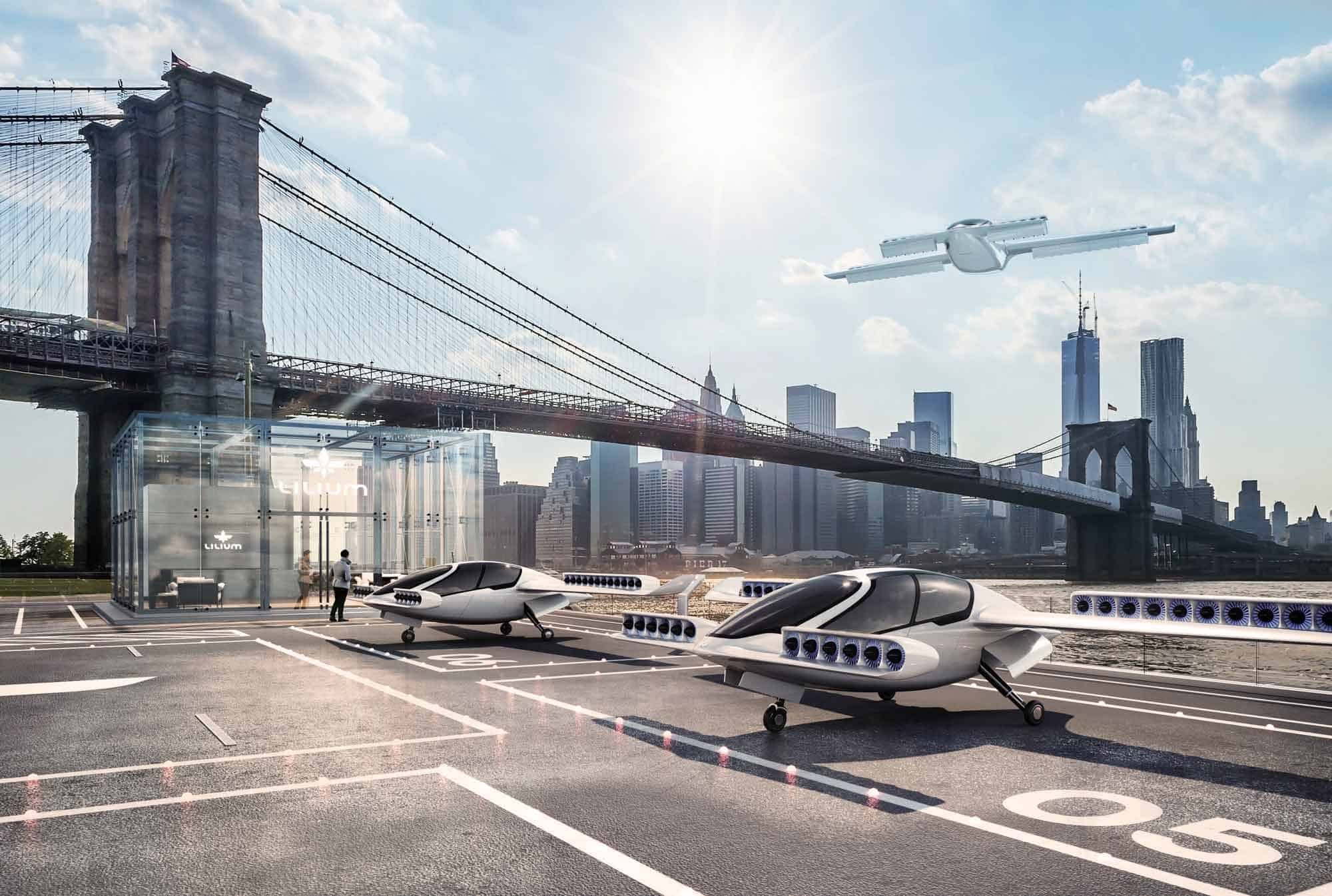Tune into any sci-fi movie from the last 20 years and you’ll notice that various visions of our future have one thing in common: flying cars. Somewhat a cliché of what the future will look like, the idea of a flying car is one that has long been explored in theory. In practice, few attempts were made viable. 3 years ago a “disruptive aviation start-up” Lilium threw its hat in the ring with a flying car and ever since the machine kept proving its success.
Founded in 2015
Lilium was created in 2015 by co-founders Daniel Wiegand, Sebastian Born, Patrick Nathen and Matthias Meiner with one purpose in mind – to build the first-ever fully electric vertical take-off and landing (VTOL) jet. Given the infancy of the company, you’d be excused for assuming they were still making their first steps, but surprisingly this is not the case. Lilium not only garnered positive press for its developments but already successfully completed its first test flight.

In a remarkably short space of time the talented team at Lilium has already got their prototype up and running. The two-seater vehicle with a range of 300km and max cruising speed of 300km/h, achieved through the use of 36 engines, successfully completed its first test flight in April 2017. As a fully electric vehicle, Lilium’s flying car has zero emissions. As eco-friendly as imaginable, the lightweight jet’s energy use is super optimized, weighing in at around 90% less than an average drone.
“It’s the same battery that you can find in any Tesla,” said Patrick Nathen, co-founder of Lilium Jet. “The concept is that we are lifting with our wings as soon as we progress into the air with velocity, which makes our airplane very efficient. Compared to other flights, we have extremely low power consumption.”
Accessible to All
-

5 Seater Lilium Jet Diagonal View -

5 Seater Lilium Jet Top View
But that is just the beginning. The following years brought further improvements to Lilium’s jet. Its capacity was increased from two people to five, and according to Lilium, this means a difference in our daily lives on a fundamental level. Instead of battling rush hour traffic to make it on time to the airport, people may be able to fly from Manhattan to JFK Airport for less than the price of lunch – and in roughly 10% of the time.
This is perhaps one of the most exciting aspects of Lilium’s design when it comes to market potential. The company has not set out to design an exclusive model for the elite minority but instead has created a vehicle which can be rolled out to improve the lives of everybody walking the streets with a bit of change in their pockets. People will be able to travel faster, cheaper, and smarter. And all this is coming soon as the manufacturer is planning to introduce their flying car to cities across the world by 2025.

Pilot’s License Requirements
As the technology is still being developed, it will be necessary for the Lilium flying car users to operate the vehicles themselves at first. The long-term goal, though, is to have autonomous vehicles. This means that customers will be able to punch in a few details to the app or website and have their private flying car arrive much like an Uber. Actually, Uber has experimented with autonomous vehicles, too, and the same technology was incorporated in Amazon’s drones and even for takeaway outlets. Lilium is simply taking this tech to the skies. Nathen certainly agrees that the time is right, with Lilium proving to be born in a fortunate age:
The futuristic image of a flying car is complete when witnessing how the vehicle moves. The Lilium Jet uses vertical movement for both take-off and landing before wing power takes the reins to propel the vehicle forward. This design makes it incredibly practical for congested areas, with no need for a runway thanks to the take-off which is more akin to a helicopter than a traditional airplane. Indeed, this appeared to be at the forefront of Lilium’s thoughts, as their official website itself states:

“Lilium aims at liberating towns and cities from today’s congestion and pollution, with people able to come and go freely, vastly expanding the radius of their everyday lives.”
The use of the word “liberating” is particularly interesting. It cements the idea that the co-founders don’t just see this as the flexing of modern technology’s bicep, but a genuine movement towards a more progressive economy.
Practicality Challenges

Of course, this throws up some entirely new issues. If, as the team at Lilium envision, the part-car part-jet really does take off in a major way and is accepted as the new go-to mode of transport, how exactly would this be integrated into our existing transport systems? Brand new certification and legislation would need to be put in place to monitor the electric aircraft, and although the model is capable of landing without a runway there would need to be plenty of landing pads placed around major cities to accommodate the vehicles with the level of convenience and accessibility proposed.

Lilium’s Mission Statement reads: “Our mission is to enable the world where everybody can fly anywhere, anytime.” It might not happen overnight but, based on what we’ve seen so far, Lilium won’t stop until they get there.








